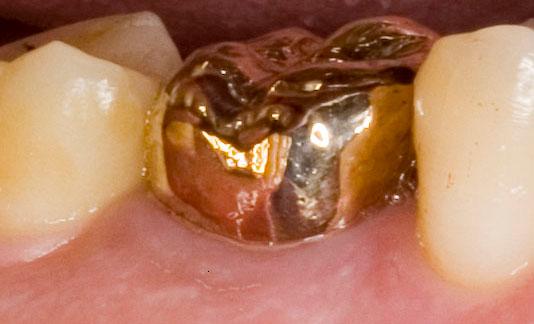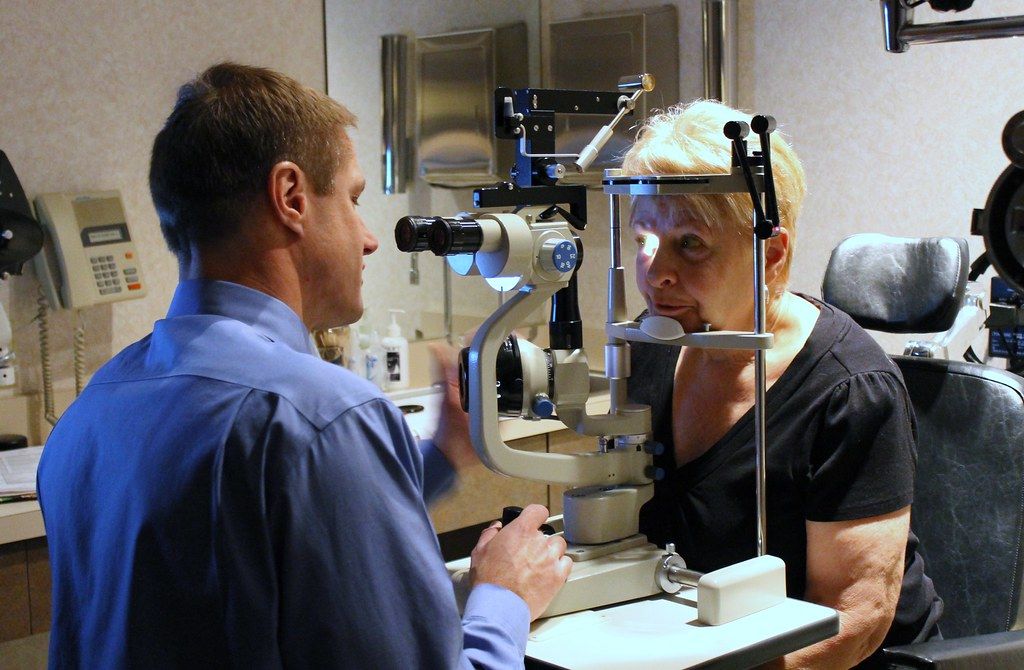
For many Americans, turning 65 marks a significant milestone, often accompanied by the transition to Medicare. Medicare Part A (hospital insurance) and Part B (medical insurance), collectively known as Original Medicare, are designed to cover a substantial portion of medical expenses. Part A helps pay for inpatient hospital stays, skilled nursing facility stays, surgery, hospice care, and some home health care. Part B, on the other hand, assists with doctors’ visits, outpatient care, certain preventive services, and some medical equipment and supplies. Most individuals can begin enrolling in Medicare three months before the month they turn 65, setting the stage for their healthcare in retirement.
However, it’s crucial for beneficiaries to understand that Original Medicare, despite its comprehensive framework, leaves some pretty significant gaps in health care coverage. These unaddressed areas can lead to unexpected medical bills in retirement if not anticipated and planned for. This is precisely why a growing number of Medicare beneficiaries opt for Medicare Advantage plans (MA) or supplemental insurance policies like Medigap to help bridge these coverage voids. While these alternatives offer broader benefits, it’s important to remember that extras or perks through Medicare Advantage could be reduced or withdrawn in a later plan year, as a 2022 report highlighted concerns about denied necessary care for some beneficiaries.
To ensure you’re a smarter, better-informed individual navigating your healthcare journey, this in-depth article will provide a closer look at 12 key areas not covered by traditional Medicare. We’ll also touch upon supplemental insurance policies, Medicare Advantage, and other strategies that can help manage these additional costs, ensuring you’re not caught off guard by healthcare expenses in your retirement years. Educating yourself on what Medicare does and doesn’t cover is an essential step towards financial and medical peace of mind.

1. **Outpatient Prescription Drugs**One of the most frequently encountered gaps in Original Medicare is the absence of coverage for outpatient prescription drugs. While Medicare Part A and Part B handle a wide array of medical services, medications you take at home are generally not included under this umbrella. This can be a substantial expense for many, particularly those managing chronic conditions that require ongoing prescriptions.
Fortunately, there are specific avenues available to address this critical need. You can purchase a separate Part D prescription drug policy, which is specifically designed to cover outpatient medications. Alternatively, a Medicare Advantage plan often combines both medical and drug costs into a single package, offering a convenient solution for many beneficiaries. Some retiree health-care policies may also provide prescription drug coverage, acting as another potential resource.
Enrollment in Part D or Medicare Advantage coverage typically aligns with your initial Medicare enrollment or when you lose other existing drug coverage. It’s also possible to switch policies annually during the open enrollment season each fall, allowing you to compare costs and coverage for your specific medications. The Medicare Plan Finder is a valuable tool that can simplify this comparison process, helping you find a plan that best suits your individual needs. Notably, married couples have the flexibility to select different Part D policies, ensuring each spouse can choose coverage tailored to their personal health requirements.
Looking ahead, significant changes are coming to prescription drug costs. For individuals enrolled in a Part D or Medicare Advantage plan in 2025, there will be an out-of-pocket cap of $2,000 for medications. This cap is designed to protect beneficiaries from exorbitant drug costs, with the option to spread these out-of-pocket expenses over the year rather than facing high costs in a single month. In 2026, this cap will see a slight increase to $2,100. Furthermore, if you are part of the Medicare Prescription Payment Program (MPPP) in 2026, you will be automatically re-enrolled for the following year unless you formally withdraw. It’s important to differentiate that these out-of-pocket caps apply only to medications covered by your Part D plan, and not to spending on Medicare Part B drugs, which include vaccinations, injections administered by a doctor, and some outpatient prescription drugs that fall under medical care rather than pharmacy benefits.
Read more about: Your Essential Guide to Medicare’s Uncovered Costs: 14 Critical Services You Might Need to Budget For

2. **Routine Physical Exams**It might seem counterintuitive for a health insurance program, but Original Medicare does not cover annual physicals or routine physical exams. Traditionally, these yearly check-ups have been recommended as a preventative measure, aimed at early detection of potential health issues before they escalate into more significant problems. This absence of coverage for a comprehensive ‘physical’ often surprises new Medicare beneficiaries who are accustomed to such exams being a standard part of their employer-sponsored health plans.
However, Medicare does provide coverage for a distinct service known as a Medicare Wellness Visit. This is also referred to as a wellness exam and serves as an assessment of your overall health and well-being. Unlike a traditional physical that might include hands-on examinations or extensive lab work without specific medical necessity, the wellness visit focuses on creating a personalized prevention plan based on your medical history and current health status. Medicare Part B covers this annual wellness exam, along with many preventive screenings, with no copay or deductible, making it a valuable, cost-free benefit.
During this wellness exam, your primary care provider will combine information gathered from the visit with your medical record to evaluate your risk for common preventable health problems such as heart disease, cancer, and type 2 diabetes. Based on this assessment, your doctor will then develop a personal prevention plan, which includes a checklist of necessary screenings you should undergo. While having a wellness exam every year isn’t mandatory, there are compelling reasons to utilize this benefit, as it helps proactively manage your health and identify potential concerns early.
To be eligible for a Medicare Wellness Visit, you must have had Part B for at least 12 months, and you can receive this benefit once every 12 months, meaning 11 full months must have passed since your last visit. It is essential to distinguish between a “routine physical exam” which Medicare does not cover, and the “Medicare Wellness Visit,” which it does cover. While the latter is an excellent preventive tool, it is not a substitute for the comprehensive physical many individuals might expect, and you may still need to pay a share of the cost for certain recommended tests or services that arise from the wellness exam if they go beyond basic preventive screenings.
Read more about: Beyond Forgetfulness: Understanding the 10 Early Warning Signs of Alzheimer’s Disease

3. **Long-Term Care**One of the most substantial potential financial burdens in retirement is the cost of long-term care, an area where Original Medicare provides very limited coverage. The expenses associated with long-term care facilities and services can be staggering. For instance, according to Genworth estimates cited by SeniorLiving.org, the median cost of a private room in a nursing home was approximately $131,583 in 2025. An assisted-living facility commanded a median cost of $72,924, and the services of a home health aide could cost around $220 per day. These figures underscore the critical need to plan for these services independently.
Original Medicare’s coverage for long-term care is primarily restricted to skilled nursing services, not custodial care. Skilled nursing care involves medical treatment and rehabilitation provided by licensed professionals, such as physical therapy after a hip replacement, for a limited duration. Conversely, custodial care encompasses non-medical assistance with daily living activities like bathing, dressing, eating, and using the restroom. Medicare explicitly does not cover these essential, day-to-day supportive services, which form the bulk of what is needed in long-term care settings like nursing homes or assisted living facilities.
While Medicare may cover short-term stays in rehab facilities following a qualifying hospital stay – for example, if you need inpatient physical therapy for several weeks after surgery – it will not cover if you require long-term assistance with activities of daily living in a nursing home or assisted living center. In such scenarios, these considerable costs will typically fall squarely on your shoulders. Even if admitted to a nursing home for long-term care, you still use Medicare for many services, including hospital care, medical supplies, and physician visits, but not for the long-term custodial care itself.
Recognizing this significant gap, several solutions exist to help defray these monumental costs. Many individuals choose to purchase long-term care insurance, a specialized policy designed to cover these expenses. Another option is a combination long-term care and life insurance policy, offering dual benefits. Furthermore, a long-term care rider can sometimes be added to an annuity, providing a mechanism to help offset the costs. For veterans, access to some long-term care programs may be available, and those with limited income and savings might find assistance through Medicaid, which often covers nursing home care once specific eligibility criteria are met. The crucial takeaway is that planning for long-term care requires proactive steps outside of Original Medicare.
Read more about: Smartwatch Longevity Secrets: Decoding Battery Life to Avoid Future Money Pits with Top Devices

4. **Deductibles and Co-pays**Even with Original Medicare Part A and Part B coverage, beneficiaries are responsible for a range of deductibles and co-payments, which represent significant out-of-pocket expenses. These are the immediate ‘gaps’ that many people fail to budget for, potentially leading to substantial unexpected medical bills. Understanding these cost-sharing requirements is essential for financial planning in retirement.
For Part A, which covers hospital stays, beneficiaries in 2025 will face a deductible of $1,676 before coverage even begins. This deductible applies per benefit period. Furthermore, long hospital stays incur additional daily costs: $419 per day for days 61-90, and a more significant $838 per day for any days beyond that. It is important to be aware that over your lifetime, Medicare provides only a total of 60 days beyond the 90-day limit, known as “lifetime reserve days.” Once these 60 days are exhausted, you will be responsible for the full hospital cost. A benefit period begins the day you are admitted as an inpatient and ends when you have not received any inpatient care for 60 consecutive days. If you are readmitted within this 60-day window, it counts toward the same benefit period and deductible, but your total days accumulate, impacting your use of lifetime reserve days.
Part B, covering doctors’ services and outpatient care, also has its cost-sharing requirements. In 2025, you’ll need to pay a $257 deductible. After this deductible is met, Medicare typically covers 80% of the approved costs for doctors’ services, lab tests, and X-rays, leaving you responsible for the remaining 20% coinsurance. This 20% can add up quickly, especially for ongoing treatments or multiple specialist visits. Without supplemental coverage, “the sky is the limit as far as potential out-of-pocket costs,” as noted by Joel Mekler, a health benefits professional and Medicare expert.
To fill these significant financial gaps, several options are available. A Medigap, or Medicare supplement, policy is sold by private insurers and comes in 10 standardized versions designed to pick up where Medicare leaves off. These plans can cover the Part A hospital deductible, the Part B deductible, and coinsurance/copayments. Crucially, if you purchase a Medigap policy within the first six months of signing up for Medicare Part B, insurers cannot reject you or charge more due to preexisting conditions. After this initial enrollment period, insurers can use underwriting to assess your health and adjust premiums. Alternatively, a Medicare Advantage plan provides both medical and drug coverage through a private insurer and may also include additional benefits like vision and dental care, offering a bundled solution to cover these deductibles and co-payments.
Read more about: Guard Your Golden Years: 14 Unexpected Expenses That Could Derail Your Retirement Budget

5. **Routine Dental Care**Maintaining good oral health is a vital component of overall well-being, yet Original Medicare does not provide coverage for routine dental services. This means that expenses for regular dental visits, teeth cleanings, fillings, dentures, and most tooth extractions typically fall outside of what Medicare will pay for. For many seniors, managing dental costs can become a significant financial concern, especially as dental issues tend to become more prevalent with age.
This exclusion applies to what are generally considered “routine services and supplies” by the Centers for Medicare & Medicaid Services. While it might seem surprising, the focus of Original Medicare is primarily on medical necessities rather than preventive or restorative dental care. Consequently, beneficiaries must explore alternative avenues to ensure their dental health needs are met without incurring unexpected and often high out-of-pocket costs.
Several options exist to help cover dental expenses. Some Medicare Advantage plans include coverage for basic cleanings and X-rays, although it’s important to note that these plans often come with an annual coverage cap, commonly around $1,500. This cap means that extensive dental work may still require additional out-of-pocket payments. Another solution is to purchase a separate dental insurance policy, which can offer more comprehensive coverage for a wider range of services. Dental discount plans also provide an alternative, offering reduced rates for services from participating dentists.
For those who plan ahead, building up money in a Health Savings Account (HSA) before enrolling in Medicare can be a strategic move. While you cannot make contributions to an HSA after signing up for Medicare, any funds accumulated beforehand can be withdrawn tax-free at any age to cover qualified medical, dental, and other out-of-pocket costs. This can provide a substantial cushion for managing dental expenses, among other healthcare needs, in retirement.
Read more about: Beyond the Chrome: Unmasking 13 Car Driver Stereotypes That Are More Than Just Roadside Chatter

6. **Routine Vision Care**Similar to dental care, Original Medicare generally does not cover routine eye exams or provide coverage for eyeglasses and contact lenses. This means that regular check-ups to assess your vision, update prescriptions, and obtain corrective eyewear are typically out-of-pocket expenses for beneficiaries. For individuals relying on glasses or contacts, this can represent a recurring and substantial cost.
There are, however, specific and limited exceptions to this rule. Medicare Part B will cover an annual eye exam if you have diabetes, as this condition can significantly impact eye health and lead to serious complications if not monitored. Additionally, Medicare covers eyeglasses after certain types of cataract surgery, recognizing the medical necessity of restoring vision following such a procedure. Beyond these specific scenarios, routine vision care falls outside the scope of Original Medicare benefits.
To secure coverage for routine vision needs, beneficiaries often look to other sources. Some Medicare Advantage plans include vision coverage as part of their expanded benefits. These plans can help pay for routine eye exams and even a portion of the cost of eyeglasses or contact lenses, though the extent of coverage can vary significantly between plans. It is always advisable to review the specific benefits of any Medicare Advantage plan to understand its vision care offerings.
Another approach is to purchase a separate supplemental policy that specifically provides vision care coverage. These policies are designed to fill the gap left by Original Medicare, offering more comprehensive benefits for routine eye health. Furthermore, much like with dental care, an HSA established before enrolling in Medicare can be a valuable financial tool. Funds from an HSA can be taken out tax-free at any age to reimburse yourself for a wide array of vision-related expenses, including exams, glasses, contact lenses, and even prescription sunglasses, offering a flexible way to manage these costs.
Read more about: 13 Moments of Pure Vision: Unpacking the Raw Drive of Cinema’s Most Influential Directors

7. **Hearing Aids**Maintaining good hearing is more than just about sound; it’s a crucial aspect of cognitive health. Research indicates that hearing aids play a significant role in preserving brain health for those with hearing loss, with one study finding that they lowered the rate of cognitive decline in older adults at high risk of dementia by almost 50%. Despite their profound impact, Original Medicare typically does not cover routine hearing exams or the cost of hearing aids, which can range from $2,000 to $4,000 per ear. This exclusion leaves many beneficiaries to navigate these substantial expenses independently.
Fortunately, pathways exist to address this important need. Many Medicare Advantage plans have expanded their benefits to include coverage for hearing aids and associated fitting exams, offering a potential solution within a bundled plan. Additionally, various discount programs are available that can help reduce the cost of hearing aids, making them more accessible. For those who planned proactively, funds saved in a Health Savings Account (HSA) before enrolling in Medicare can be utilized tax-free for hearing aids, hearing tests, and other out-of-pocket expenses, providing a valuable financial cushion.
The landscape of hearing assistance has also seen innovation with the introduction of over-the-counter (OTC) hearing aids. These devices are designed for individuals with mild hearing loss and can be a more affordable alternative, typically costing between $89 and $3,000 a pair, as reported by Senior Living. It is strongly recommended by experts, including Johns Hopkins, to undergo an audiology test before purchasing OTC hearing aids to ensure they are the right fit for your specific hearing needs and condition. This thoughtful approach helps guarantee that your investment in better hearing is both effective and appropriate.
Understanding the limitations of Original Medicare regarding hearing care is essential for planning. By exploring Medicare Advantage options, discount programs, or leveraging pre-existing HSAs, beneficiaries can proactively manage the costs associated with maintaining this critical sense. The goal is to secure the necessary support to preserve not only hearing but also overall cognitive well-being as we age.
Read more about: Unlock Your Brain’s Full Potential: 14 Essential Steps for Lifelong Cognitive Health

8. **International Medical Care**For those who enjoy exploring the world, it’s important to understand that Original Medicare generally does not extend its coverage to medical care received while traveling outside the United States. There are only very limited circumstances where Medicare might cover care abroad, such as emergencies on a cruise ship within six hours of a U.S. port. It’s vital to note that Original Medicare’s coverage primarily applies to the 50 states, the District of Columbia, and certain U.S. territories, including the Commonwealth of Puerto Rico, U.S. Virgin Islands, Guam, Commonwealth of North Mariana Islands, and American Samoa, as well as territorial waters touching U.S. land.
This significant gap means that if you fall ill or sustain an injury while on an international trip, you could be facing substantial medical bills entirely out-of-pocket. However, there are specific supplemental options designed to provide a safety net for medical emergencies abroad. Several Medigap (Medicare supplement) plans, specifically plans C, D, F, G, M, and N, offer foreign travel emergency coverage. These plans typically cover 80% of the billed charges for medically necessary emergency care received outside of the U.S., after a $250 annual deductible, up to a lifetime limit of $50,000. It’s crucial to remember that not all Medigap plans provide this benefit, so checking the specifics of your chosen plan is essential.
Additionally, some Medicare Advantage plans have begun to include coverage for emergency care abroad as part of their comprehensive benefits package. It is always wise to review your specific plan details to confirm this coverage. Another highly recommended option for international travelers is to purchase a dedicated travel insurance policy. Beyond covering some medical expenses while overseas, these policies can also provide coverage for emergency medical evacuation, which can be an incredibly costly service, potentially running into tens of thousands of dollars to transport you via a medical plane or helicopter back home or to a suitable medical facility.
Given the potential for high medical costs and the complexities of international healthcare systems, planning for medical coverage before embarking on a trip outside the U.S. is not merely advisable—it’s essential. Whether through specific Medigap plans, Medicare Advantage benefits, or a standalone travel insurance policy, securing appropriate international medical coverage can offer invaluable peace of mind for your global adventures.
Read more about: Electricity Explained: Unpacking the Invisible Force That Shapes Our Modern Lives

9. **Medically Unreasonable and Unnecessary Services and Supplies**A foundational principle of Original Medicare is that it covers services and supplies deemed ‘medically necessary.’ This means that items and services considered medically unreasonable or unnecessary by Medicare standards typically fall outside of coverage. This broad category can encompass a wide array of services, including excessive therapies, diagnostic procedures, exams, and treatments for which a patient has no specific symptoms or diagnoses. Many alternative therapies, such as transcendental meditation, also generally fall under this excluded classification.
A common example of services that may be deemed medically unnecessary by Medicare, and thus not covered, is massage therapy, even when sought for chronic pain relief. While research suggests massage may offer short-term relief for chronic pain, Original Medicare does not generally cover it. However, Medicare has made some advancements in pain management alternatives; for instance, beneficiaries with lower-back pain lasting 12 weeks or longer can now receive up to 20 acupuncture treatments each year. Medicare also covers chiropractic care in specific limited circumstances, such as manual spinal manipulation for spinal misalignment with a doctor’s referral, and physical and occupational therapy when prescribed by a doctor. This distinction underscores Medicare’s focus on evidence-based medical necessity for coverage.
Similarly, routine foot care by a podiatrist, such as callus removal, nail care, or treatments for flat feet, is generally not covered if it is not considered medically necessary. This often surprises beneficiaries who are used to regular foot care as part of their overall health regimen. However, Medicare Part B does cover certain foot exams or treatments that are related to nerve damage due to diabetes, or for foot injuries and ailments such as bunions, hammertoe, or heel spurs, or foot care necessary due to a systemic disease. The key differentiator is the medical necessity linked to a diagnosed condition, rather than general maintenance or comfort.
Understanding this ‘medically necessary’ threshold is critical for beneficiaries. If you are considering therapies or services that fall into this ambiguous zone, it’s always best to consult with your healthcare provider about pain management strategies or other treatments that Medicare *will* cover. If you are determined to pursue non-covered services like routine massage therapy or certain foot care, you should be prepared to pay for these out-of-pocket, ensuring your financial planning aligns with Medicare’s coverage rules. Medicare Advantage plans *might* offer some benefits in these areas, but it’s essential to confirm with your specific plan.

10. **Health Care Costs for Spouses and Dependents**When transitioning to Medicare, a significant shift in coverage philosophy occurs that often impacts family units. Unlike many employer-sponsored health plans that offer comprehensive family coverage, Medicare operates on an individual basis. As Casey Schwarz, Senior Counsel, Education, and Federal Policy at MedicareRights.org, succinctly explains, ‘Medicare is coverage just for you.’ This means that while you may be eligible for Medicare, your spouse and any dependents will not automatically be covered under your Medicare plan.
This distinction is particularly important for individuals who are still employed and covered by an employer health plan when they become Medicare-eligible. For some, it might make more financial and practical sense to delay their full Medicare enrollment or to integrate Medicare with their existing employer coverage, especially if that employer plan provides family benefits. This strategy allows them to maintain continuous health coverage for their spouse and children, which would otherwise be lost if they solely relied on Medicare. The decision to keep an employer plan, even with Medicare as a primary payer, often hinges on the need to preserve coverage for loved ones.
Therefore, when making decisions about Medicare enrollment, it’s crucial to consider not just your own health needs but also the healthcare needs and current coverage status of your spouse and any other dependents. Medicare enrollment is a personal choice that has broader family implications, requiring careful assessment of all available options to ensure everyone in your household maintains appropriate health insurance protection. This often means exploring separate coverage options for family members who are not yet Medicare-eligible, or strategically utilizing employer plans alongside your individual Medicare benefits.
Read more about: The $1,907 Social Security Shift: 9 Overlooked Strategies for Retirees to Maximize Benefits

11. **Concierge Fees**In the evolving landscape of healthcare, some physicians and medical practices have adopted a ‘concierge’ or ’boutique’ model, where patients pay an annual membership fee to gain access to enhanced services. These fees are typically touted as providing more responsive and available care, often including longer appointments, direct access to doctors, and personalized wellness plans. While the allure of such tailored attention can be strong, these membership fees can be substantial, often running into thousands of dollars per year, varying significantly based on the practice and the level of service offered.
A critical point for Medicare beneficiaries to understand is that Original Medicare unequivocally does not cover these concierge or membership fees. Medicare’s coverage is strictly for medically necessary services, not for administrative access or premium service tiers offered by private practices. This means that if you choose a concierge doctor, the annual membership fee will be an entirely out-of-pocket expense that you must budget for independently, separate from your standard Medicare premiums, deductibles, and co-payments.
However, if your concierge physician is also a participating provider in Medicare, they are still obligated to offer all Medicare-covered services to you under the standard Medicare rules. This means that after you’ve paid their separate membership fee, you will still be subject to Medicare’s usual copays and coinsurance for any medically necessary services that Medicare covers. The concierge fee simply grants you access to their enhanced model of care, but it does not replace or modify your cost-sharing responsibilities for services covered by Medicare.
For beneficiaries considering concierge medicine, it’s essential to weigh the perceived benefits against the additional financial commitment. You have the option to either pay the concierge fee out of your own pocket or seek a physician who does not require such a fee. It is highly advisable to have a clear discussion with any potential concierge physician about their fee structure, what services it covers, and how it integrates with your Medicare benefits. Some states also have specific laws that provide consumer protections for these types of arrangements, so doing your research can help ensure you make an informed decision about your healthcare provider.
Read more about: Your Essential Guide to Medicare’s Uncovered Costs: 14 Critical Services You Might Need to Budget For

12. **Cosmetic Surgery**When it comes to aesthetic enhancements, Original Medicare generally draws a clear line: it does not cover cosmetic surgery costs or procedures performed solely for aesthetic improvement. This includes common procedures such as face lifts, tummy tucks, liposuction, and non-surgical treatments like Botox injections, when their primary purpose is to change appearance without a medical necessity. The underlying philosophy is that Medicare is designed to cover medically necessary care for health conditions, not elective procedures aimed at altering one’s physical appearance.
However, there are important exceptions to this general rule where Medicare might provide coverage. If a surgery or procedure serves a therapeutic purpose or is reconstructive in nature due to an injury, illness, or congenital anomaly, Medicare may cover it, even if it also happens to result in an improved appearance. For instance, Medicare might elect to cover the prompt repair of severe burns, reconstructive surgery following a serious car accident to restore function or form, or certain surgeries for therapeutic reasons that also happen to serve a cosmetic purpose, such as surgery to improve the function of malformed body parts.
A notable example of covered reconstructive surgery is following a mastectomy, where Medicare typically covers breast reconstruction. In such cases, the procedure is considered an integral part of recovery and addressing the medical consequences of cancer treatment. The key distinction lies in the *reason* for the surgery: if it’s for therapeutic, functional, or reconstructive reasons linked to a medical condition or injury, it may be covered. If it’s purely for personal aesthetic preference, it will almost certainly be an out-of-pocket expense.
Therefore, if you are considering a procedure that might have both medical and cosmetic implications, it is imperative to discuss this thoroughly with your physician and Medicare plan provider. Understanding the specific criteria for ‘medically necessary’ reconstructive or therapeutic procedures versus purely cosmetic ones is essential for anticipating coverage and avoiding unexpected costs. Always verify coverage details before proceeding with any such treatments to ensure financial clarity.
Navigating Medicare can feel like deciphering a complex puzzle, but understanding its exclusions is just as important as knowing what it covers. As we’ve explored, Original Medicare offers a robust foundation for healthcare in retirement, but it leaves distinct gaps across crucial areas such as outpatient prescription drugs, routine physicals, long-term care, deductibles, routine dental and vision care, hearing aids, international medical emergencies, medically unnecessary services, family coverage, concierge fees, and cosmetic procedures. Being caught off guard by these exclusions can lead to significant financial strain and impact your overall well-being.
Read more about: Beyond the Red Carpet Glow: Unpacking the 12 Most Controversial Beauty Treatments Hollywood Stars Actually Swear By
The good news is that you don’t have to face these challenges alone. A wealth of solutions exists, from supplemental insurance policies like Medigap and the comprehensive benefits of Medicare Advantage plans to strategic financial tools like Health Savings Accounts. Staying informed, utilizing resources like the Medicare Plan Finder, and engaging with State Health Insurance Assistance Programs (SHIPs) can empower you to make intelligent, proactive choices. Educating yourself and planning ahead are your strongest allies in securing not just medical care, but true peace of mind throughout your retirement journey. Don’t just hope for the best; prepare for it, and ensure your healthcare journey is as smooth and predictable as possible.



